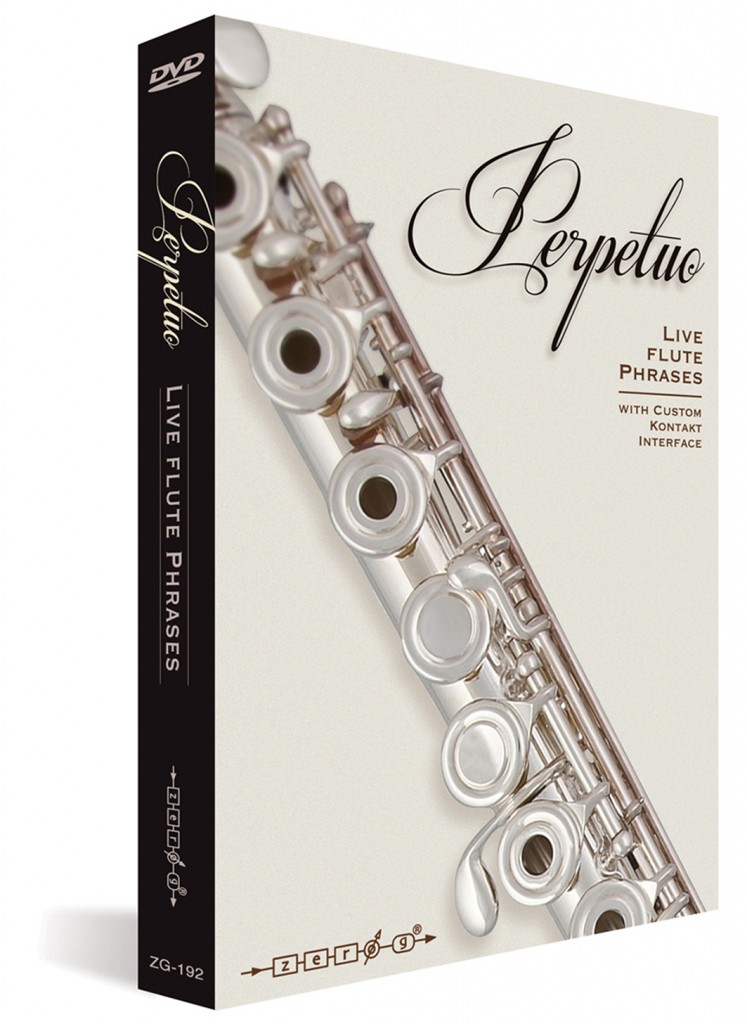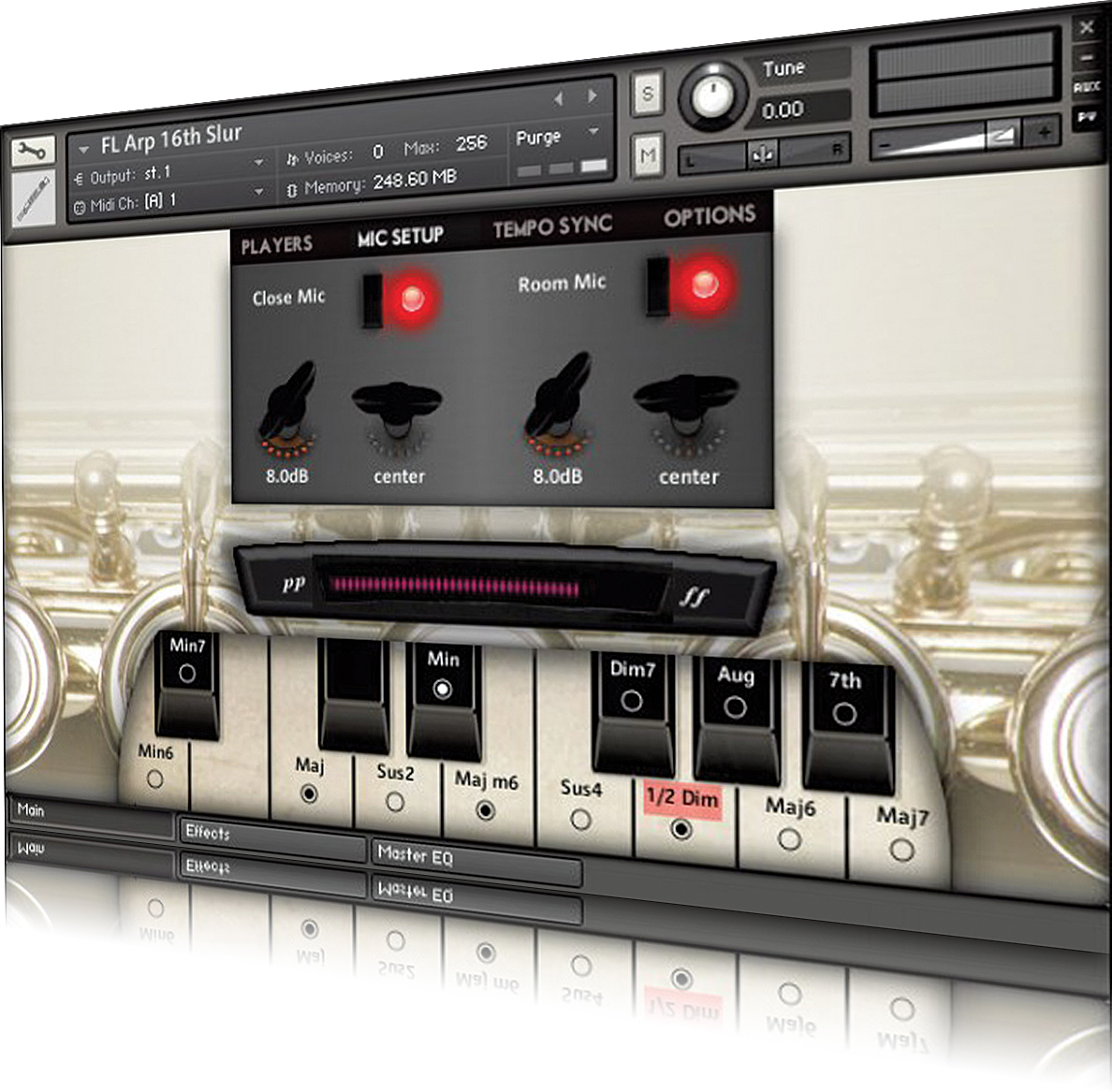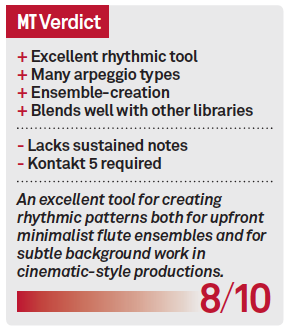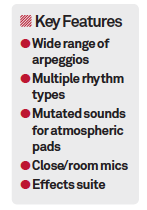Zero G Perpetuo Live Flute Phrases Review
Perpetuo provides pre-recorded flute patterns and phrases along with flexible control. Keith Gemmell has a blow-by-blow account… Details Price £80 Contact Time+Space – 01837 55200 Web www.zero-g.co.uk Minimum system requirements Kontakt 5 & 64-bit environment (4GB RAM recommended) Amazon.co.uk Widgets Library and trailer-music composers don’t usually have the luxury of a full orchestra at their disposal, and many […]
Perpetuo provides pre-recorded flute patterns and phrases along with flexible control. Keith Gemmell has a blow-by-blow account…

Details
Price £80
Contact Time+Space – 01837 55200
Web www.zero-g.co.uk
Minimum system requirements Kontakt 5 & 64-bit environment (4GB RAM recommended)
Library and trailer-music composers don’t usually have the luxury of a full orchestra at their disposal, and many of them produce their work using sample libraries. However, while modern sampled orchestral instruments can sound incredibly realistic, using them to create convincing runs, arpeggios and simple repetitive rhythms remains a difficult task, even with the very best libraries. Zero-G’s solution to the problem was to record live instrumental phrases, and the company initially produced two collections: Spiritoso: Live Cello Phrases, and Luminoso: Live Violin Phrases. Proving successful, the principle has been extended to include Perpetuo Live Flute Phrases: an 8GB collection of thousands of live, recorded phrases compressed down to 4.6GB using Kontakt’s lossless compression technology. A full version of Kontakt 5 is required to run the library.
Perpetual Motion
As the name ‘Perpetuo’ implies, the accent here is firmly on the creation of repeated patterns, and this library features mainly arpeggios, runs and rhythm types, which are available as slurred and staccato patterns. All were played live by a flautist from the Liverpool Philharmonic and built from three-bar loops for natural variation (as opposed to scripted legato and round-robin articulation). Recorded at three dynamic levels (soft, medium-loud and loud) expressive control is mapped to the mod wheel, along with a bold pp to ff visual GUI display. The transition from soft to loud is very smooth and you can set the start point to silence for fade-ins/outs if needs be. Using the mod wheel is vital for a really realistic-sounding performance with repetitive material.
A wide range of arpeggios can be played as either eighth- or sixteenth-notes covering the common major and minor types as well as diminished, sixths, sevenths and so on. Runs, too, are available as various scale types.
Although only one note is available, the rhythm instrument is probably the most flexible option, allowing you to play whatever notes you like without the restriction of a preset pattern. Using your DAW to automate the keyswitches (8ths, 16ths and triplet variations), complex rhythms are easily created.
Lastly, there is a collection of mutated sounds for creating hypnotic pads and generating synth-like patterns. These are reminiscent of the dreamier patches found on some of Korg’s legacy synths from the 90s and should prove useful if angelic and spacey moods are the order of the day.

Tutti Flutti
Most patches load with a solo flute, but for a thicker sound, duo and trio ‘tutti’ ensembles can be created. They are, however, just layers of the solo flute as opposed to extra players. Nevertheless, the overall effect sounds fairly realistic. Much depends on blending the two available mic positions – close and room – and it’s worth spending a little time experimenting with the balance.
Kontakt’s convolution and algorithmic reverbs, delay, modulation effects, distortion and compression are all provided in the effects suite along with basic EQ. Although satisfactory results are obtainable, you are advised to use higher-quality third-party plug-ins for better results.
We found Perpetuo to be an excellent tool for creating rhythmic, obstinato-style patterns. In fact, the accent is firmly on rhythm as opposed to melody because it lacks sustained notes, which is a bit irritating because it means using another library to end a phrase on anything other than a short note. Although the patterns could become somewhat overly repetitive if used carelessly, plenty of flexibility is built-in to the program and much can be achieved with the mod wheel in terms of variation in volume and accentuation of notes.
Although you can easily build minimalist-style compositions from scratch, because it syncs to the host tempo and can be manipulated to fit most harmonic material, it also works well with existing material.
All in all, this is a very flexible pre-recorded phrase and pattern library that works great on its own and, importantly, blends well with other orchestral libraries.




